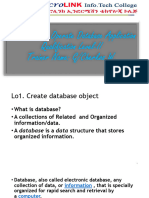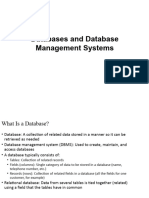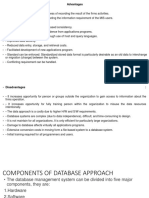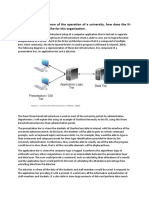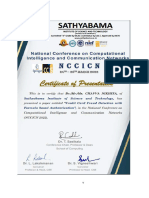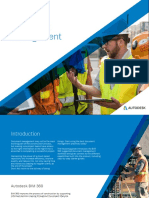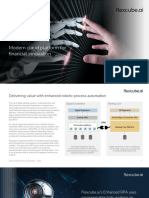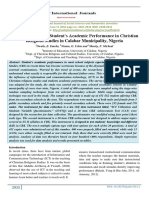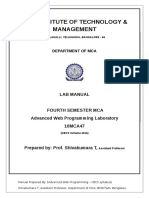0% found this document useful (0 votes)
6 views41 pagesModule 6 - Databases
The document provides an overview of databases, including their structure, types, advantages, and disadvantages. It explains the role of database management systems (DBMS) and outlines components such as tables, forms, queries, and reports. Additionally, it discusses database security measures, common threats, and the importance of accurate record processing.
Uploaded by
augustineanasheCopyright
© © All Rights Reserved
We take content rights seriously. If you suspect this is your content, claim it here.
Available Formats
Download as PDF, TXT or read online on Scribd
0% found this document useful (0 votes)
6 views41 pagesModule 6 - Databases
The document provides an overview of databases, including their structure, types, advantages, and disadvantages. It explains the role of database management systems (DBMS) and outlines components such as tables, forms, queries, and reports. Additionally, it discusses database security measures, common threats, and the importance of accurate record processing.
Uploaded by
augustineanasheCopyright
© © All Rights Reserved
We take content rights seriously. If you suspect this is your content, claim it here.
Available Formats
Download as PDF, TXT or read online on Scribd
/ 41






















